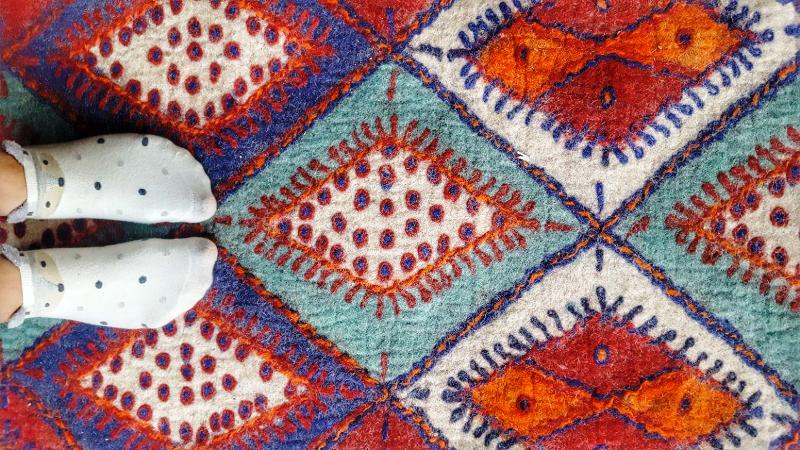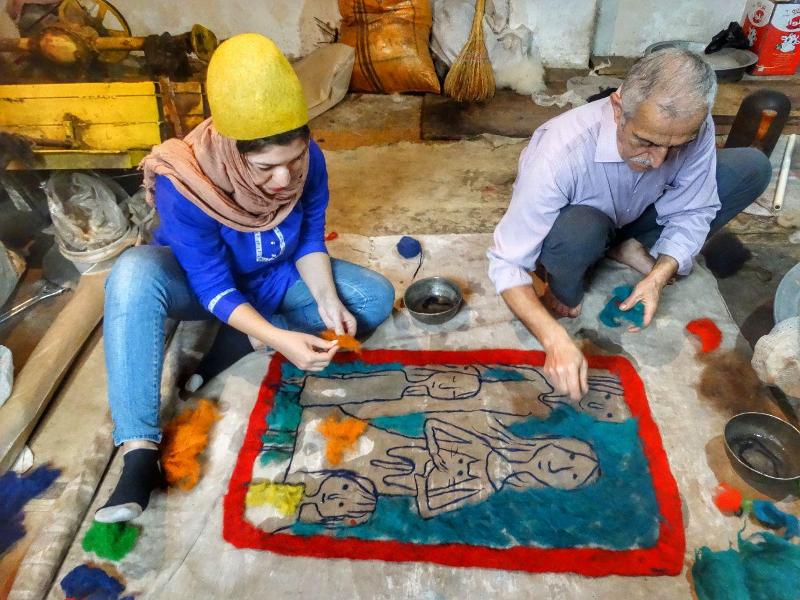 Signin with Google
Signin with Google Signin with Facebook
Signin with Facebook

 Activities,Culture,History
Activities,Culture,HistoryThe Woolen Garden of the Iranian Felt Rugs

The ancient art of feltmaking
If Iran is famous for its beautiful Persian carpets, the country is also home to an exceptional type of rug: felt rugs, called "Namad" in Farsi which is made with camel or sheep’s wool in different colours. This type of woollen rug is the oldest known textile in the world, dating back to the Neolithic age. In Iran and in some neighbouring countries it is still handmade following the traditional way.
This ancient art of carpet making is common among nomad tribes in the mountainous regions of Central Asia. Thousands of years ago, nomadic people spread between the Balkans and Mongolia, started to use their flocks' wool to create fabrics for their daily life.
In the north part of Iran and Gilan province, feltmaking is based on sheep wool. The different colours of wool are sold together and to make the felt rug they should be separated. The high-quality wools belong to the second wool clip in the fall because the wool is cleaner thus doesn’t need to be washed.
An ancestral technique
The origin of such an ancient craft is surrounded by many stories and remains unclear. In Sumerian legends, it is the hero Urnamman of Lagash who is credited for the discovery of felt, and Christians also mentioned this art in the Bible. While fleeing from persecution, Saint Clement and Saint Christopher packed their sandals with wool to prevent blisters. At the end of their long walk, they realized that the water of their sweat had turned the wool into felt.
If we don't know the true story behind the felt rugs, what we know is that it finds its origin as far as between 10.000 BCE and 2000 BCE. It is an art that appeared before the discovery of weaving techniques. A stunning felt rug dating back from the Bronze Age is still preserved at the National Museum in Copenhagen.

An itinerant art
Despite the fact that this art technique has barely changed, it has remained alive in Central Asia and in Iran in particular, where men and women continue to perpetuate this craft. It is the only region in the world with such a tradition because few places have access to the type of wool available here, which makes felt so strong.
Felt fabrics are used in many aspects of their lives: clothing, shepherd's cloak, carpets, tent coverings, sleep bags and chapeau. Patterns and motifs vary and are transmitted from generation to generation, telling the stories of nature, tradition and life. As most of the felt makers were members of a nomad tribe, this art was mainly itinerant.
Compressing rather than weaving
Contrary to traditional carpets in Iran, felt rugs are rubbed and pressed to create a very dense and strong textile. It's usually made entirely of wool. The essence of good quality for the felt products is in the duration of scrubbing which means the more being rubbed, the more quality it turns to be as the result.

Feltmaking Process
First, the yarn is made from sheared wool. In the north of Iran, this wool yarn is called “Meftil” in the native vocal. Then designs are spun with dyed yarns like a painting on a canvas. When the pattern is completed, loose wool is distributed over the pattern, and more boiling water is added. The felt maker then rolls the rug tightly and kneading it over the floor for a quite long time.
This process, with the help of hot water, results in the fact that the fibres are compressed and thus hook together, giving birth to those beautiful rugs which somehow look like an artistic collage.



